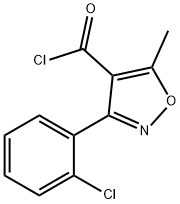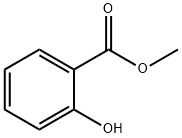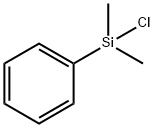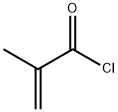3-(2-Chlorophenyl)-5-methylisoxazole-4-carbonyl chloride
- CAS NO.:25629-50-9
- Empirical Formula: C11H7Cl2NO2
- Molecular Weight: 256.08
- MDL number: MFCD00020811
- EINECS: 247-137-4
- SAFETY DATA SHEET (SDS)
- Update Date: 2025-10-25 08:05:52

What is 3-(2-Chlorophenyl)-5-methylisoxazole-4-carbonyl chloride?
Chemical properties
3-(2-Chlorophenyl)-5-methylisoxazole-4-carbonyl chloride is Cream solid
The Uses of 3-(2-Chlorophenyl)-5-methylisoxazole-4-carbonyl chloride
3-(2-Chlorophenyl)-5-methylisoxazole-4-carbonyl chloride is used for preparing isoxazolyl penicillin derivatives.
Flammability and Explosibility
Not classified
Synthesis
To the solution was dropwise added under cooling at -12° to -14°C a solution of 3-(2-chlorophenyl)-5-methylisoxazol-4-carbonyl chloride, which was prepared from 3-(2-chlorophenyl)-5-methylisoxazol-4-carboxylic acid (1.78 g.) and thionyl chloride (10 ml.), in methylene chloride and then stirred for 5 hours. After the reaction, to the solution was added ice-water, and the resulant mixture was washed with water, dilute phosphoric acid, an aqueous solution of sodium bicarbonate and water in turn, and dried over magnesium sulfate.
Properties of 3-(2-Chlorophenyl)-5-methylisoxazole-4-carbonyl chloride
| Melting point: | 41-42°C |
| Boiling point: | 381.7±42.0 °C(Predicted) |
| Density | 1.381±0.06 g/cm3(Predicted) |
| vapor pressure | 0.001Pa at 25℃ |
| pka | -5.80±0.50(Predicted) |
| color | White to off-white |
| Water Solubility | 128.2mg/L at 25℃ |
| Sensitive | Moisture Sensitive |
| BRN | 791931 |
| CAS DataBase Reference | 25629-50-9(CAS DataBase Reference) |
| EPA Substance Registry System | 4-Isoxazolecarbonyl chloride, 3-(2-chlorophenyl)-5-methyl- (25629-50-9) |
Safety information for 3-(2-Chlorophenyl)-5-methylisoxazole-4-carbonyl chloride
| Signal word | Danger |
| Pictogram(s) |
 Corrosion Corrosives GHS05 |
| GHS Hazard Statements |
H314:Skin corrosion/irritation H318:Serious eye damage/eye irritation |
| Precautionary Statement Codes |
P301+P330+P331:IF SWALLOWED: Rinse mouth. Do NOT induce vomiting. P303+P361+P353:IF ON SKIN (or hair): Remove/Take off Immediately all contaminated clothing. Rinse SKIN with water/shower. P305+P351+P338:IF IN EYES: Rinse cautiously with water for several minutes. Remove contact lenses, if present and easy to do. Continuerinsing. P405:Store locked up. |
Computed Descriptors for 3-(2-Chlorophenyl)-5-methylisoxazole-4-carbonyl chloride
New Products
4,4-Difluoropiperidine hydrochloride tert-butyl 9-methoxy-3-azaspiro[5.5]undecane-3-carboxylate Indole Methyl Resin N-Isopropylurea N,N-Dicyclohexylcarbodiimide(DCC) MELDRUMS ACID 5-METHYLISOXAZOLE-4-CARBOXYLIC ACID Magnessium Bis glycinate Zinc ascorbate 1-bromo-2-butyne 2-acetamidophenol 9(10H)-anthracenone Erythrosin B, 4-Piperidinopiperidine 2-((4-morpholinophenylamino) (methylthio) methylene) malononitrile 2,4-dihydroxybenzaldehyde 3-(4-morpholinophenylamino)-5-amino-1H-pyrazole-4-carbonitrile Methyl 2-methylquinoline-6-carboxylate 2,6-dichloro-4-nitropyridine 4-Bromo-2-chlorobenzonitrile 2-(benzylamino)acetic acid hydrochloride 4-(tert-Butoxycarbonylamino)but- 2-ynoic acid 3,4-dihydro-2H-benzo[b][1,4]dioxepine 1-Phenyl-1-cycloprppanecarboxylicacidRelated products of tetrahydrofuran





![2-[[(2-ethylphenyl)(2-hydroxyethyl)amino]methyl]-3,3-difluoro-Propanenitrile](https://img.chemicalbook.in/CAS/GIF/2647-14-5.gif)


You may like
-
 25629-50-9 3-(2-Chlorophenyl)-5-methylisoxazole-4-carbonyl chloride 98%View Details
25629-50-9 3-(2-Chlorophenyl)-5-methylisoxazole-4-carbonyl chloride 98%View Details
25629-50-9 -
 3-(2-Chlorophenyl)-5-methylisoxazole-4-carbonyl chloride 99%View Details
3-(2-Chlorophenyl)-5-methylisoxazole-4-carbonyl chloride 99%View Details
25629-50-9 -
 3-(2-Chlorophenyl)-5-methylisoxazole-4-carbonyl chloride 98%View Details
3-(2-Chlorophenyl)-5-methylisoxazole-4-carbonyl chloride 98%View Details
25629-50-9 -
 3-(4-amino-1-oxoisoindolin-2-yl)-1-methylpiperidine-2,6-dione 98%View Details
3-(4-amino-1-oxoisoindolin-2-yl)-1-methylpiperidine-2,6-dione 98%View Details -
 20677-73-0 (2,2-diethoxyethyl)methylamine 98%View Details
20677-73-0 (2,2-diethoxyethyl)methylamine 98%View Details
20677-73-0 -
 3-(4-(hydroxyamino)-1-oxoisoindolin-2-yl)piperidine-2,6-dione 98%View Details
3-(4-(hydroxyamino)-1-oxoisoindolin-2-yl)piperidine-2,6-dione 98%View Details -
 57381-49-4 2-bromo-4-chlorobenzonitrile 98%View Details
57381-49-4 2-bromo-4-chlorobenzonitrile 98%View Details
57381-49-4 -
 4,6-dichloropyrimidine-5-carbaldehyde 98%View Details
4,6-dichloropyrimidine-5-carbaldehyde 98%View Details
5305-40-8
